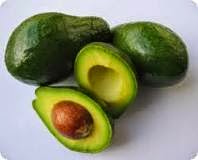Quince:
About:
Quince, (kwins) Cydonia oblonga, is the sole member of the genus Cydonia in the family Rosaceae (which contains apples and pears, among other fruits.). It is a small deciduous tree that bears a pome fruit. The quince is similar in appearance to the pear, and golden yellow when mature. The fruit is knobby and ugly with an irregular shape and often a gray fuzz. Once the quince is cooked, it is soft and tender and yields a nice syrup from the cooking process.
Throughout history the cooked fruit has been used as food, but the tree is also grown for its attractive pale pink blossom, and other ornamental qualities. Although Genesis does not name the specific fruit that Adam and Eve ate from the tree of knowledge of good and evil, some texts suggest it may have been a quince.
Quince used to be more popular than it is today.
Uses:
Most varieties of quince are too hard, astringent, and sour to eat raw. High in pectin, they are used to make jam, jelly, and quince pudding, or they may be peeled, then roasted, baked, or stewed. The immature fruit is green with dense grey white pubescence, most of which rubs off before maturity in late autumn when the fruit changes color to yellow with hard strongly perfumes flesh. Pectin levels diminish as the fruit ripens. The flesh of the fruit turns red after a long cooking time. Their very strong perfume means they can be added in small quantities to apple pies and jam to enhance the flavor. Adding a diced quince to apple sauce will enhance the flavor of the apple sauce. The term "marmalade", originally meaning a quince jam, derives from "marmelo", the Portuguese word for the fruit.
History:
For over 4000 years quince trees have been grown in Asia and the Mediterranean. Quince are also known as "Pear of Cydonia". Quince is thought to be the "Golden Apple" of Greek mythology. The quince tree is native to Uzbekistan, Tajikistan, Iran, Armenia, Azerbaijan, Georgia, Pakistan, Kashmir, and Afghanistan. The quince is native to rocky slopes and woodland margins in South-west Asia, Turkey, and , Iran, although it can be grown successfully at latitudes as far north as Scotland.
Health Benefits:
The phytochemistry of quince is under study for several possible medical uses. The Indo-Pakistan quince seeds are used by herbalists for mucous, rashes, and ulcerations. A gel prepared from the seeds soaked in water is used for throat and vocal chord inflammation, as well as skin rashes and allergies.
Season:
Quince are available September through January. They can be hard to find.
Selecting and Storing:
Choose quince that are large, firm, and yellow with little or no green. Handle carefully as they bruise easily. Once at home wrap in a plastic bag and refrigerate for up to 2 weeks.
So..... Eat up! Enjoy! I'll show you how.
Simple but Good:
Quince Compote:
4 quinces
1/2 cup water
1/4 - 1/2 cup sugar
1 tsp grated fresh ginger
1 stick of cinnamon
Wash peel, and core quinces. Remove all seeds. Cut the flesh into cubes. In a medium sized saucepan combine water, quinces, sugar, and ginger.
Bring to a boil then reduce heat and simmer for 15 - 20 minutes, or until tender.
After cooking add cinnamon stick and refrigerate until cool.
(adsbygoogle = window.adsbygoogle || []).push({});
(adsbygoogle = window.adsbygoogle || []).push({});

















